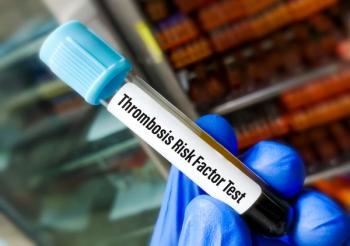
Clinical
Latest News
Latest Videos

CME Content
More News

In their final thoughts, medical experts highlight key considerations in the atopic dermatitis (AD) treatment landscape.

Amy Brennan underlines the impact of affordability and how it may be inhibiting the patient atopic dermatitis (AD) treatment process.

In this interview, Tycel Phillips, MD, associate professor of medicine, Division of Lymphoma and Bone Marrow Transplantation, City of Hope, Duarte, California, discusses the advancements that are shaping the future of B-cell lymphoma treatment, as well as access barriers.

The decreasing cost of DNA sequencing has contributed to an uptick in genomic sequencing for precision diagnostics in rare diseases.

The new classifications included several major changes and may help identify different subtypes.

It’s estimated around 20% of patients will discontinue their first course of anti–tumor necrosis factor-α (anti–TNF-α) and rates increase over time

Results are based on a study of low-dose interleukin-2 (IL-2) carried out at Dana-Farber Cancer Institute.

To the authors’ knowledge, the study is the first to include a patient with essential thrombocythemia (ET) and MPL and Type 1 calreticulin gene mutations.

Although methotrexate was linked with a higher risk of anemia, it carried risks of kidney and other serious infections similar to those of biologics.

Regardless of a prior history of swallowed topical corticosteroids, dupilumab was proven to be an effective treatment in patients with eosinophilic esophagitis.

The prevalence of high metabolism scores for visceral fat, especially among sensitive populations, may be associated with a heightened asthma risk, according to one study.

The study, wrote the researchers, offers insight into emerging and uncommon complications following chimeric antigen receptor (CAR) T-cell therapy.

Unmet needs include both improved myasthenia gravis treatments as well as a way to monitor progression of the disease, said James F. Howard, Jr, MD, professor of neurology at the University of North Carolina at Chapel Hill.

The approval makes the drug Europe’s first and only interleukin (IL)-17A inhibitor approved for the condition.

Physicians should proactively ask patients what alternative therapies, if any, they are using.

The 2023 European Hematology Association (EHA) Congress, convening virtually and in Frankfurt, Germany, from June 8-11, 2023, will feature cutting-edge findings in oncology and hematology, with a special focus on incorporating patient-reported outcomes and real-world data.

Key opinion leaders provide insight on the effect of racial disparities on patients with cervical and breast cancer.

Experts expand on racial and social factors influencing maternal mortality.

Using propensity score matching in a US nationally representative sample, authors found the effect of nonadherence to diabetes guidelines on health care expenditures of patients with diabetes.

Ixazomib was first approved in the United States in 2015 for relapsed/refractory multiple myeloma.

Payor considerations in the treatment of HIV are explored.

A panel of experts open a discussion surrounding the current disease landscape of HIV.

In their closing thoughts, the panelists discuss financial considerations for treating patients with RRMM.

Building strong support systems from both clinical and personal perspectives can drive optimal patient outcomes.

Barriers to sufficient multiple myeloma treatment are explored.
















































